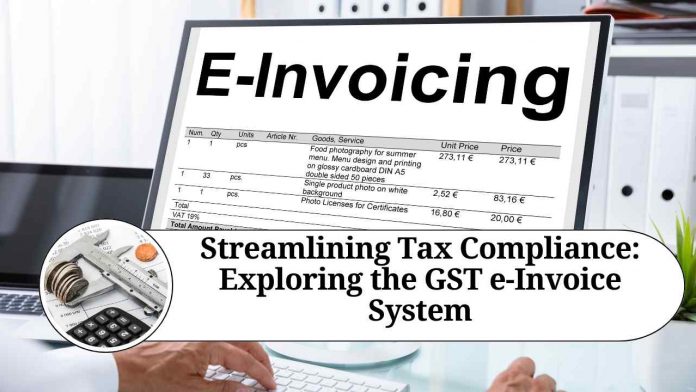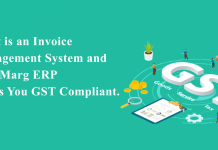Recent Updates on e-Invoicing:
10th May 2023
On May 10, 2023, CBIC (Central Board of Indirect Taxes and Customs) announced the commencement of the 6th phase of e-invoicing. The announcement included new guidelines that will be effective from August 1, 2023. One significant change is the reduction of the threshold limit for GST e-invoicing from ?10 crores to ?5 crores. This means that all registered individuals with an annual turnover of ?5 crore or more are required to generate e-invoices for every tax invoice, debit note, and credit note issued to a registered person. The primary objective behind this measure, as stated by the government, is to enhance GST taxpayer compliance and introduce greater transparency to the GST system.
Introduction
In a rapidly digitizing world, governments across the globe are embracing technology to simplify and modernize their tax systems. In India, the Goods and Services Tax (GST) regime has been a game-changer since its implementation in 2017. One of the recent advancements in this tax framework is the GST e-Invoice system. With the aim of enhancing tax compliance and reducing fraudulent activities, the GST e-Invoice system is revolutionizing the way businesses generate and process invoices. In this blog, we will delve into the details of this innovative system and understand its benefits for businesses and the overall economy.
I. Understanding the GST e-Invoice System:
The GST e-Invoice system is an electronic invoicing mechanism that integrates the invoicing process directly with the GST Network (GSTN). It requires businesses to generate structured digital invoices in a standardized format, which are then authenticated by the GSTN. These authenticated invoices, known as e-invoices, are assigned a unique Invoice Reference Number (IRN) and a digital signature, ensuring their authenticity and integrity.
II. Key Features and Components of the GST e-Invoice System:
a. Invoice Registration Portal (IRP): The Invoice Registration Portal is the central component of the GST e-Invoice system. It serves as a centralized platform for businesses to generate, validate, and register e-invoices in real-time. The IRP facilitates the creation of the unique IRN and validates the invoices against business rules and compliance requirements.
b. Standardized Invoice Format: The GST e-Invoice system mandates businesses to follow a standardized format for generating invoices. This format ensures consistency, uniformity, and ease of processing for businesses, tax authorities, and other stakeholders.
c. Unique Invoice Reference Number (IRN): Each e-invoice generated under the GST e-Invoice system is assigned a unique IRN. The IRN acts as a digital fingerprint for the invoice, enabling easy identification and verification of its authenticity.
d. Digital Signature: The GST e-Invoice system uses digital signatures to ensure the integrity and non-repudiation of e-invoices. This enhances the trustworthiness of invoices and reduces the risk of fraud.
III. Benefits of the GST e-Invoice System:
a. Enhanced Tax Compliance: The GST e-Invoice system promotes tax compliance by minimizing errors and discrepancies in the invoicing process. With standardized formats and automated validation, businesses can reduce the chances of non-compliance and avoid penalties.
b. Reduction in Tax Evasion: By digitizing the invoicing process and integrating it with the GSTN, the e-Invoice system leaves minimal room for tax evasion. Real-time invoice authentication and traceability help curb fraudulent practices and promote a transparent business environment.
c. Simplified Reconciliation: The GST e-Invoice system streamlines the process of reconciling invoices between buyers and suppliers. The standardized format and unique IRN facilitate seamless matching of invoices, reducing manual effort and ensuring accuracy.
d. Faster Input Tax Credit (ITC) Processing: The e-Invoice system expedites the processing of Input Tax Credit claims. With authenticated invoices readily available on the GSTN, businesses can access accurate and verified data, simplifying the ITC claim process and reducing processing time.
IV. Challenges and Adoption Considerations:
While the GST e-Invoice system brings significant benefits, its implementation may pose challenges for businesses, especially small and medium-sized enterprises. Upgrading IT infrastructure, adapting to new processes, and ensuring compliance with the standardized format can be daunting. However, with the right support and awareness, businesses can navigate these challenges and leverage the system’s advantages.
Conclusion
The implementation of the GST e-Invoice system marks a significant milestone in India’s journey towards digital tax administration. By leveraging technology to streamline the invoicing process, this system has brought numerous benefits for businesses and the overall economy. The standardized format, unique IRN, and digital signatures ensure the authenticity, integrity, and traceability of invoices, reducing the chances of tax evasion and fraudulent activities.
Read more useful content:
Frequently Asked Questions (FAQs)
Q. What is the GST e-Invoice System?
The GST e-Invoice system is an electronic invoicing mechanism introduced by the Government of India to automate and standardize the invoicing process. It requires businesses to generate structured digital invoices in a prescribed format, which are then authenticated by the GST Network (GSTN).
Q. Who is required to comply with the GST e-Invoice system?
As per the GST regulations, businesses with an annual turnover exceeding Rs. 50 crore are mandated to comply with the GST e-Invoice system. However, voluntary adoption of e-invoicing is encouraged for businesses below this turnover threshold as well.
Q. How does the GST e-Invoice system work?
Under the GST e-Invoice system, businesses generate invoices in a standardized format and upload them to the Invoice Registration Portal (IRP). The IRP validates the invoices against business rules and compliance requirements and assigns a unique Invoice Reference Number (IRN) and digital signature. The authenticated e-invoice is then shared with the recipient and uploaded to the GSTN.
Q. What are the benefits of adopting the GST e-Invoice system?
Adopting the GST e-Invoice system offers several benefits, including enhanced tax compliance, reduction in tax evasion, simplified reconciliation, and faster processing of Input Tax Credit (ITC) claims. It also improves transparency, minimizes errors, and promotes a seamless flow of information between businesses and tax authorities.
Q. Are there any exemptions or specific industries excluded from the GST e-Invoice system?
Currently, there are no specific exemptions or exclusions for industries or sectors from the GST e-Invoice system. However, certain categories of transactions such as exports, SEZ supplies, and supplies by non-resident taxpayers are exempted from e-invoicing.
Q. Does the GST e-Invoice system require any additional software or technology infrastructure?
Businesses need to adopt compatible accounting or billing software that supports the generation of e-invoices in the prescribed format. They also need access to the internet for seamless integration with the Invoice Registration Portal (IRP).
Q. Can businesses cancel or modify e-invoices generated under the GST e-Invoice system?
After the generation of an e-invoice and obtaining the IRN, any modifications or cancellations must be done through the GSTN portal using the credit and debit notes. It is not possible to directly modify or cancel an e-invoice.
Q. How does the GST e-Invoice system impact the process of filing GST returns?
The GST e-Invoice system simplifies the process of filing GST returns by ensuring that the data from the e-invoices is automatically captured and made available on the GSTN. This reduces the manual effort involved in data entry and minimizes the chances of errors or mismatches in return filing.
Q. What are the penalties for non-compliance with the GST e-Invoice system?
Non-compliance with the GST e-Invoice system may attract penalties under the GST law. The specific penalties depend on the nature and severity of the non-compliance and can include fines, interest, or other punitive actions as prescribed by the authorities.
Q. How can businesses get assistance or support for implementing the GST e-Invoice system?
The GSTN and government authorities provide detailed guidelines, FAQs, and resources on the official GST portal (www.gst.gov.in) to help businesses understand and implement the e-Invoice system. Additionally, businesses can seek assistance from their tax consultants, accounting software providers, or engage with the dedicated helpdesk for e-invoicing queries.




















